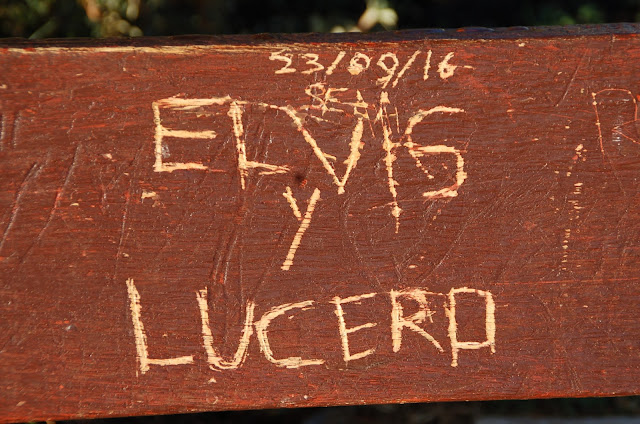My second long bus journey: 17 hours.
Puno, Peru
At a little past five in the morning I wake up as the bus arrives in the town of Puno. We're told we'll have to continue with another bus in about two hours. I succumb to the circumstances and get myself a map of sorts copied on a piece of paper. Then I realise that Lake Titicaca is just behind the bus station.
Titicaca is a lake situated at some 3,800 metres above sea level and is almost the size of Uusimaa (and could fit nine Berlins in it). As such, it is considered to be the highest navigable lake in the world.
It's beautiful. And dirty.
The air is still cool this early in the morning when I stroll along the shore of the lake. There are people on their morning jog. And dogs, always dogs.
Elvis and Lucero, of the Titicaca Shore Bench, would like to send their greetings.
The contrasts are striking, as always.
I buy my breakfast - two rolls with avocado and salt - from the lady with a bike vending stand and get on the second bus.
After just a couple of hours down the road with the lake most of the time visible on our left, we arrive at the border. After a brief stop to have our passports stamped, we cross over to Bolivia. (The large white building is the Border Control office. The smaller one is a public bathroom.)
Cobacabana, Bolivia
In Cobacabana, we're once again told there will be a two-hour wait before the next bus. It's a happy surprise; now I'll have time to walk around Cobacabana too.
Now, if you come on a horse from the nearby village to visit a friend in town, a part of you might find it smart to tie the horse somewhere while you're gone...but then again, why bother. (I watched the horse for a good half an hour, and while nobody came to look at it in that time, it didn't seem to bother or be bothered by anyone either.)
San Pedro de Tiquina, Bolivia
One more surprise for the day: we have to cross the lake. (Later, looking at the map I realise that the border runs in such a peculiar manner that crossing the lake is the only way to not end up in Peru again.) There are boats that have been especially constructed to carry buses. They are long and low and wooden, and quite unlike all the other ferry boats I've seen before.
















No comments:
Post a Comment